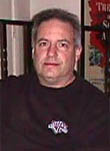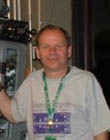|
|
This topic comprises 2 pages: 1 2
|
|
Author
|
Topic: Visible Red LED Reader Compatibility with Vintage 35mm Prints
|
Cris Capp
Film Handler
Posts: 5
From: Santa Monica, CA
Registered: Oct 2009
|
 posted 10-19-2009 03:20 PM
posted 10-19-2009 03:20 PM




Hi everyone,
This is my first post here at Film Tech and I have a few questions for you all. Please go easy on me as I am a bit of a newbie when it comes to cinema technology!
1. Is there a difference between ‘redeveloped silver soundtrack’ prints and old original vintage/classic 35mm prints? Or are they one and the same?
2. Are the Analogue LED Sound Readers, such as the BACP RSTR-2000, compatible with very old original classic prints? Is there any loss of audio quality while playing a vintage film?
So I understand that new cyan dye soundtracks require the LED readers. But I also read that the visible red LED is a compromise between old and new print technologies… and that by upgrading to the new visible Red LED’s I might actually have to sacrifice some sound quality when I show old vintage prints. I’ve heard that some archival presenters actually prefer the infrared LED’s to the visible red LED’s, is this true? My problem is that I have to show both- vintage films and new cyan dye films.
From what I understand- the negative density affects amplitude of the sound signal… so I visible red LED used on a silver soundtrack results in less amplitude than a tungsten white light reader.
This is taken from http://www.dyetracks.org/ci.os.0012.reddye.html
Table 1 – Summary of Print Color Balances for Soundtracks
Color Balance
Target Densities Negative
Density Recommended
Negative Density
IR Y C M
Silver
(Redeveloped) 1.40 1.64 3.37 3.58 2.18 2.20
High Magenta
(Redeveloped) 1.09 1.44 2.02 3.82 2.88 2.70
Cyan
(Dye) 0.36 0.36 2.14 0.38 2.60 2.70
Noise Performance
“Tests have demonstrated that readers based on broad band tungsten, or white light, illumination sources are quieter than readers based on narrow band red LED illumination sources (660 ± 20 nm light energy spectrum). It is believed that this is due to the fact that when the track is illuminated by broad spectrum white light, the incoherent noise sources from each of the film's color layers add on a random basis and thus the noise "averages out." If a narrow spectral band illumination system is employed, this averaging cannot take place and thus the signal-to-noise ratio is impaired. This is true whether a standard silver track, high-magenta applicated track, or cyan dye track is being presented. It is also independent of the type of release stock employed.”
http://www.dyetracks.org/ci.os.0012.reddye.html
| IP: Logged
|
|
|
|
|
|
|
|
|
|
|
|
Monte L Fullmer
Film God

Posts: 8367
From: Nampa, Idaho, USA
Registered: Nov 2004
|
 posted 10-19-2009 09:39 PM
posted 10-19-2009 09:39 PM




quote: Cris Capp
Does BACP make a penthouse Analogue LED Reader?
In the real sense, it wouldn't work since the analog track is recorded 21 frames ahead of the picture and in marketing terms, it wouldn't be feasable to create any such hardware/software to delay the sound information backwards from the optical track to match picture frame since there is no definite need, nor demand for it.
Now, if someone who is electronic smart could conger up such a delaying device for a creation of a penthouse optical readers (or even a convienient swapping from LED to filament bulb for the basement end of the spectrum) so one could have both worlds - exciter and LED playbacks, but then the user would have to pay up the nose to have one custom built for such an occasion..
Also, if you can find a white LED to swap out in a RSLH-2 module along with having the stock RSLH-2 LED module (since they're so danged easy to change out, but you might have fits with your pre-amp settings by lowering the gain down some using white light...), then this form of swapout could be more feasable.
-Monte
| IP: Logged
|
|
|
|
Christopher Seo
Jedi Master Film Handler

Posts: 530
From: Los Angeles, CA
Registered: Jun 99
|
 posted 10-20-2009 01:16 AM
posted 10-20-2009 01:16 AM




Actually (as was mentioned before somewhere) there is at least one company, Sondor, which manufactures a penthouse that accomodates a red LED optical reader (with digital delay). Dolby Digital and DTS are also available. Here's the link. I would think it's pretty expensive though. With effort, some kind of home-brew solution could work. For example, an analog/digital basement reader could possibly be modified for dual red/infrared optical pickups. I also recall that Component Engineering made a basement reader that used white light for the digital, which could again be modified for another analog pickup.
I've run many older prints on red readers, and the sound quality has generally been good to excellent. However, there are occasions when I've wondered if white light would produce a better result, such as with noisy or sibilant tracks. I've never encountered an unplayable track. There's certainly no need to worry about faded prints, since the redeveloped track has silver and does not fade along with the picture. The single-unilateral variable-area tracks I've come across play fine as well (and I think that would be a stereo pickup issue in general).
Ultimately, it would be nice to have both white and red readers, but red light is necessary for newer prints and reverse scan is best for all prints.
| IP: Logged
|
|
|
|
|
|
|
|
|
|
|
|
|
|
|
|
All times are Central (GMT -6:00)
|
This topic comprises 2 pages: 1 2
|
Powered by Infopop Corporation
UBB.classicTM
6.3.1.2
The Film-Tech Forums are designed for various members related to the cinema industry to express their opinions, viewpoints and testimonials on various products, services and events based upon speculation, personal knowledge and factual information through use, therefore all views represented here allow no liability upon the publishers of this web site and the owners of said views assume no liability for any ill will resulting from these postings. The posts made here are for educational as well as entertainment purposes and as such anyone viewing this portion of the website must accept these views as statements of the author of that opinion
and agrees to release the authors from any and all liability.
|

 Home
Home
 Products
Products
 Store
Store
 Forum
Forum
 Warehouse
Warehouse
 Contact Us
Contact Us




 Printer-friendly view of this topic
Printer-friendly view of this topic
















